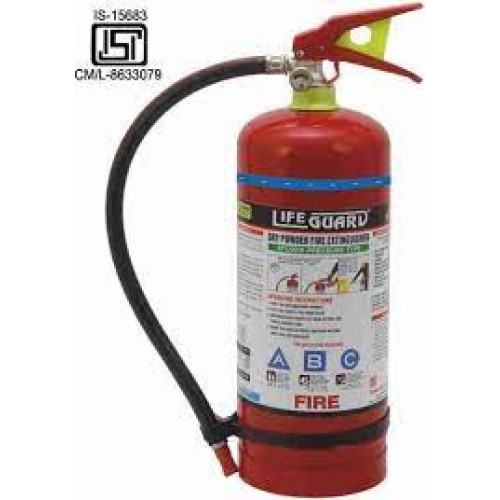The Lifeguard 9kg CO2 Fire Extinguisher is a powerful and effective fire suppression tool designed for tackling electrical and flammable liquid fires. Here's a detailed overview of its features, advantages, and uses: Key Features: 9kg Capacity: The 9kg capacity refers to the amount of CO2 (carbon dioxide) stored in the extinguisher. This is a substantial amount, making the extinguisher suitable for larger or more hazardous environments, providing more extensive fire coverage compared to smaller CO2 extinguishers (e.g., 2kg or 5kg models). CO2 (Carbon Dioxide) Agent: The CO2 agent is effective for putting out fires by displacing oxygen in the immediate area of the fire. This helps to smother the fire, cooling the flames and reducing the combustion process. CO2 is especially useful for fires involving flammable liquids (Class B) and electrical fires (Class C). Electrical Fire Protection: One of the main advantages of CO2 extinguishers is their ability to safely put out electrical fires. Since CO2 is non-conductive, it is safe to use on energized electrical equipment like computers, circuit boards, electrical panels, and machinery. This makes the Lifeguard 9kg CO2 Fire Extinguisher ideal for server rooms, data centers, and industrial settings. Class B and C Fire Protection: Class B Fires: Involves flammable liquids like gasoline, oils, paints, or solvents. Class C Fires: Involves electrical fires, such as electrical appliances, wiring, or industrial equipment. While CO2 is effective for Class B and C fires, it is not suitable for Class A fires (e.g., wood, paper, or textiles) as it may not cool the material sufficiently to prevent re-ignition. Rapid Fire Suppression: CO2 extinguishers work quickly and are ideal for use in emergencies where fast action is necessary. The pressurized CO2 is released in a snow-like form, which effectively reduces the fire's oxygen supply and extinguishes the flames. No Residue: Unlike some other extinguishing agents (like foam or powder), CO2 leaves no residue after use, making it ideal for situations where equipment or work areas must remain clean after a fire event. This makes it particularly useful in environments with sensitive machinery, like offices or server rooms. Easy to Use: Like most fire extinguishers, it follows the standard P.A.S.S. method (Pull, Aim, Squeeze, Sweep), making it easy for anyone to operate in an emergency situation. Cylinder Construction: The extinguisher's cylinder is usually made of steel or aluminum, designed to withstand the high pressure required to store CO2 gas safely. Environmentally Friendly: CO2 is a naturally occurring gas and, while it's still a greenhouse gas, it is much less harmful to the environment compared to some other extinguishing agents like certain chemical-based products.
Send Message
